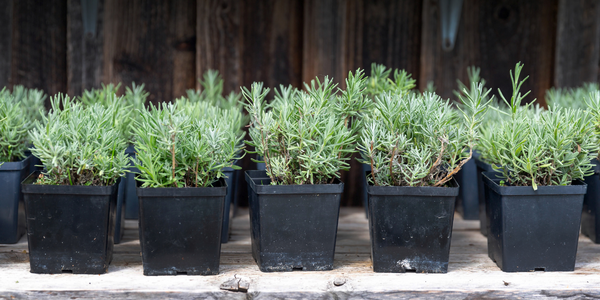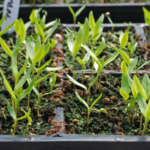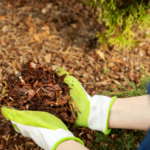Lavender is one of the most beautiful and atomic additions to any garden. However, you may forget to mark the seedling tray and be left scratching your head when various plants begin to sprout, leaving you to wonder if there is any way to identify lavender seedlings.
When lavender seedlings emerge from the seed, it can be challenging to determine what they are as they look like blades of grass. However, after a few more weeks, you’ll begin to notice the traditional needle-like leaves associated with lavender.
This article will discuss how you can identify a lavender seedling. So keep reading! We have a few tips and tricks to help you identify your lavender seedlings if you’ve forgotten to mark them.
Identifying Lavender Seedlings
Lavender is one of the most prized plants for any gardener, thanks to its color purple and blue blossom, sweet aroma, and medicinal properties. While most home gardeners grow it today for its beauty, once upon a time, it was grown for perfume, medicine, and teas.
There are various species of lavender; some can be grown from seeds, while others require stem cuttings. If you’re new to growing lavender, opting for the seed variety gives you an easier option and experience as a grower.
Preparing the lavender seeds is relatively simple and similar to various other plants; you will just want to ensure your starting around 9-12 weeks before the last frost in your growing area. The seeds will need, on average, at least 12 hours of light each day, so it’s best to start them indoors.
If you have started your lavender seedlings but forgot to mark them, you’ll be left with various seed pots in your grow house, which all look similar when sprouted. In this scenario, you may wonder if there’s some way to tell your lavender seedlings apart from the rest.
How To Identify Your Lavender Seedling
Identifying your lavender seedlings in their early days can be a relatively tricky task. When they first sprout, they look like small blades of grass, which could identify a varying amount of other plants.
It’ll take 2 to 4 weeks before you notice the blade of grass emerging from the seed. However, if you wait another 2-4 weeks, you’ll be able to identify your lavender as the seedlings will begin to develop needle-like leaves, which are generally associated with lavender.
If you’re hoping that the vibrant colors that come with lavender plants will help you to identify the seedling, unfortunately, for most lavender plants grown from seeds, they may not bloom for up to two years. So, the best option is to check for needle-like leaves.
Final Thoughts
So, while we can all be forgetful from time to time if you want to ensure that you keep a close eye on your plants as each varies in what they require for optimal growth, it’s a good idea to label your seedlings as early as you can.
There is always a way to identify various plants, such as lavender, even when they are still tiny seedlings. However, this takes years of practice and sometimes a lot of research to correctly identify what seedling you’re looking at. Better to be safe than sorry when it comes to growing lavender, so label your seedling trays.



